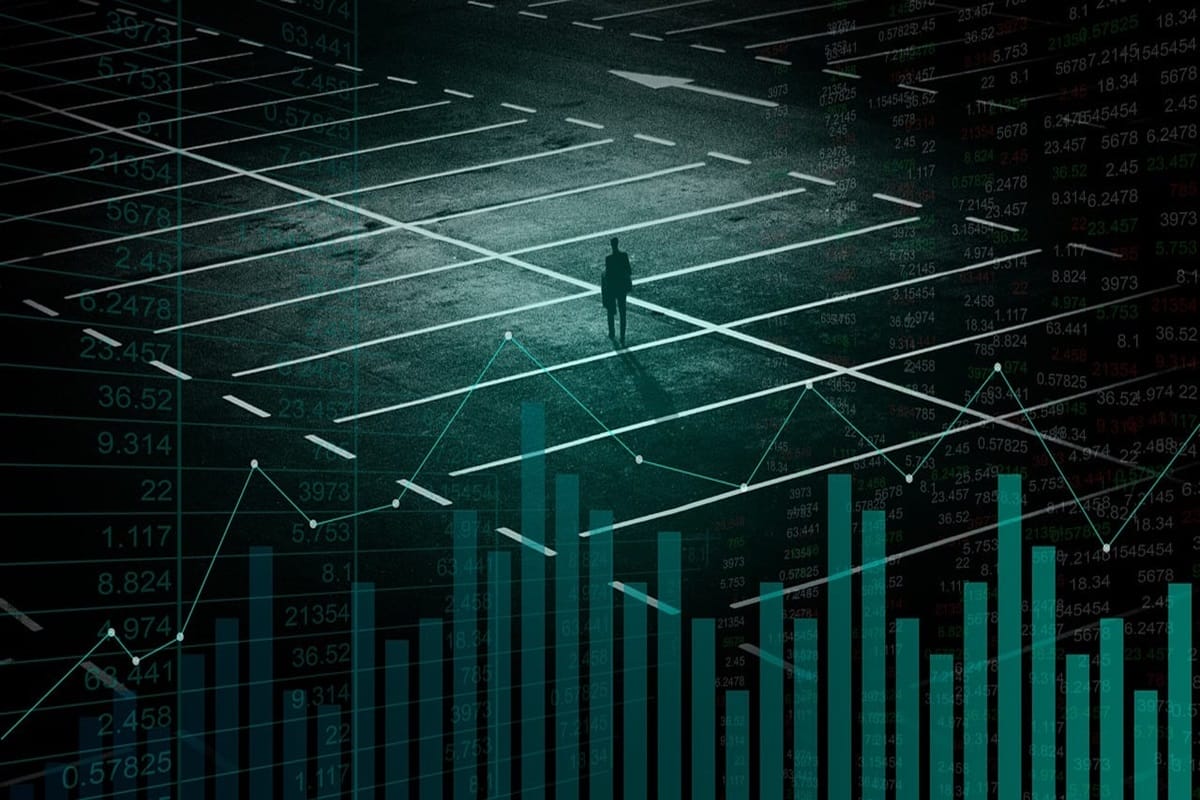On Monday, August 5, Japanese stock indexes showed a drop in price of such a scale that corresponds to the concept of historical losses and does not belong to the category of moderate decline, which is not critical.

The mentioned tendency is not what can be described as the financial and economic specifics of the specified Asian country, which has local causes. Currently, a state of affairs is taking shape in the world markets, for which the natural situation is a drop in the value of stocks. So far, it is impossible to accurately and as reliably as possible determine the depth and scale of the observed downturn in the context of the subsequent impact and from the point of view of continuation prospects. There is still no answer to the question of whether the unambiguously negative dynamic is a temporary phenomenon or a stage in what can be described as a new structure of economic reality.
The sharp and significant depreciation of securities is the result of growing concerns about the high probability that a recession scenario will materialize in the United States in the foreseeable future. It is worth noting that over the past few months, US stocks have been getting more expensive. The value of these securities was based on the expectation that the Federal Reserve would start cutting interest rates in September. Fed Chairman Jerome Powell last week actually confirmed the intention of the central bank of the United States to begin easing monetary policy next month. As part of the standard practice, cutting interest rates contributes to the growth of the value of shares, since in this case, the cost of borrowing for the business decreases, which generates prospects for increasing profits. At the same time, the current situation in the US labor market largely negates the effect of the expectation of monetary policy easing. In July, the unemployment rate in the United States unexpectedly rose to 4.3% for many. Against the background of the negative dynamic of the mentioned indicator, concerns were formed and rapidly intensified that the Fed would not act quickly enough to maintain a positive situation in the labor market. The corresponding concerns began to spread around the world. There is also currently an opinion circulating among experts that, perhaps, the economic system of the United States is currently approaching a new phase of development, a characteristic feature of which will be a slowdown in the pace of hiring.
Moreover, the fall in the value of US securities intensified after Amazon and Intel reported earnings last week that turned out to be worse than preliminary expectations and released disappointing forecasts. Against the background of the corresponding indicators, the opinion began to spread more that the transition to artificial intelligence is expensive and has uncertain prospects. This tendency has become global, starting to be implemented outside the United States. At the same time, it is worth noting that AI is an objective existing advanced technology that has demonstrated specific positive results. Artificial intelligence has significant potential, but so far it is difficult to unambiguously determine which configuration of digital thinking will be at the peak of its progress or will be observed at the intermediate stages of technological evolution. In the context of AI perception by markets the mentioned factor, to some extent, is problematic, since against the background of the lack of an unambiguous understanding of the most realistic scenario of investment results, the financing process will be complicated in the face of a symbolically foggy horizon of prospects. There is also a risk that the shares of companies operating in the artificial intelligence industry have been overvalued.
The growth of the specified securities is a fair process, but there is a possibility of its excess. The euphoria associated with the impressive cognitive capabilities of OpenAI’s ChatGPT, which debuted in 2022, could contribute to this risk. Investors are also concerned about the likelihood of strict government regulation regarding the artificial intelligence industry. Historical experience and the elementary principles of what can be described as state thinking indicate that the world’s governments will not allow themselves to leave AI outside the zone of detailed control.
Returning to the topic of the downturn in the Japanese market related to the specified processes and sentiment in the United States, it is worth noting that the Nikkei 225 index of leading stocks in Tokyo lost a staggering 4,451 points. This decrease is the largest in the entire history of the mentioned indicator. The Nikkei 225 closed more than 12% down. This indicator has also fallen by 25% since the beginning of July and ended up in the territory of the so-called bear market
Neil Newman, head of strategy at Astris Advisory in Tokyo, commenting on the depreciation of shares, mentioned the experience of 1987. In this case, it means the so-called Black Monday, when in October 1987 there was a sharp collapse in world markets, against which the Nikkei index lost 3,836 points.
The Bank of Japan is raising interest rates. The financial regulator of the Asian country is implementing an appropriate monetary policy strategy to curb the inflationary process. Against the background of these actions by the Bank of Japan, the value of the yen against the US dollar is growing, as a result of which local stocks that depend on exports become less attractive.
The securities of the Asian country’s technology companies are also on a downward trajectory. In this case, the impact factor is the above-mentioned investor sentiment, which contains skepticism about the hype about artificial intelligence. In the context of the corresponding state of affairs, it is worth mentioning the experience of the collapse of dot-com companies, which business models were based on carrying out activities on the Internet. Between 1995 and 2001, the shares of the mentioned firms were on a steady growth trajectory. In March 200, the Nasdaq index peaked at 5,132.52 points. Shortly after that, the dot-com crash began. Experts talk about different, but somehow similar reasons for what happened. Refraining from lengthy reflections and generalizations, it is worth noting that the dot-com crash, which is a symbolic fall into darkness, has become a reality, as a result of the fact that the euphoria about the prospects of the new Internet-based economy turned out to be excessive. Also, some companies promised great results in terms that turned out to be too short in the context of practical experience. Moreover, too many firms have been founded relying on the Internet as a kind of economic panacea. At that time, there was no understanding and awareness that the virtual space is a platform or an activity tool, but not a source of income that provides profit simply by the fact of its existence. However, the dot-com crash did not become an obstacle to the large-scale global development of the Internet. What happened more than 20 years ago has remained in history, while as of today, Internet technologies have actually formed a new digital dimension of objective reality. The artificial intelligence industry will likely face a similar experience. This means that the evolution of AI, being a kind of strategic process focused on the long term, is likely to continue despite market declines.
Stephen Innes, the managing partner of SPI Asset Management, says that the buzz is all about the contagion effect of this aggressive bear onslaught, underscored by fears of a hard landing in the US and a severe meltdown in Tokyo’s markets, which now appear to be self-perpetuating.
Due to triggering circuit breakers, which are designed to prevent panic sales, trading has been suspended several times in Japan and South Korea.
Neil Newman noted that there was the absence of a rebound at the end of the day, which it would normally observe due to short covering. It is at this point that traders buy back the shares they have borrowed for sale.
Other markets in Asia and Europe are also experiencing volatility. Futures on US stocks fell sharply overnight. Nasdaq futures were down 4%. Dow and S&P 500 futures fell 1.5% and 2.3%, respectively.
The Stoxx Europe 600 index, a benchmark for the region, fell 2.5% in morning trading. Over the past five days, this indicator has fallen by 6% to the lows that were on a previous occasion observed in February.
Mohit Kumar, an economist at Jefferies, says that the main driving force behind recent market moves has been enthusiastic buying. In a note released on Monday, the expert said that US stocks, especially in the technology sector, were overowned, and some froth needed to be cleared.
Taiwan’s Taiex ended down 8.4%. This is the biggest daily drop in the mentioned indicator in the entire history. South Korea’s Kospi finished 8.8% lower. Australia’s S&P/ASX 200 fell 3.7%. Hong Kong’s Hang Seng Index and China’s Shanghai Composite were down 2.3% and 1.3% respectively.
In Japan, the volatility tendency started last week. The corresponding dynamic was launched after the Asian country’s financial regulator raised interest rates for the second time in 2024 and announced plans to reduce its bond buying. Traders expect the Bank of Japan to lower borrowing costs once more this year. The probability of a corresponding action is high, as the financial regulator of the Asian country continues to counteract inflation.
On Friday, August 2, the Nikkei closed down 5.8%. This result is largely due to investor concerns about the potential impact of the strengthening yen on Japanese companies. The rise in the Japanese currency will be a negative factor for exporters and firms that earn income overseas. In this case, the form of the likely impact is damage.
Moreover, due to the strengthening of the yen, many market participants have had to unwind the carry trade in yen, a popular trading strategy. Interest rates in Japan have been very low for several decades. Many investors have borrowed cash cheaply there before converting it to other currencies to invest in higher-yielding assets.
Last week, the yen rose by almost 5% against the US dollar. On Monday, the Japanese national currency continued its upward trajectory. The yen rose by 2.2% and is trading at 143.3 to the US dollar.
Stephen Innes says that the strengthening of the national currency of the Asian country has provoked a global curtailment of carry trade deals. The expert also noted that the market turmoil is the result of a combination of factors such as the so-called hawkish stance of the Bank of Japan, weak earnings of technology companies from the United States, and slowing economic growth in China.
Last week, Beijing reported that its official manufacturing Purchasing Managers Index showed a decline in July. This means that factory activity in the Asian country continues to be weak.
It is worth noting that against the backdrop of the negative situation in the stock markets, there is also a decrease in the price of oil. This tendency is because investor concerns about the present condition and the prospects of the global economic system continue to intensify. On Monday, US oil fell by 1.9%. Currently, the price of this useful mineral is $72.10 per barrel. Brent crude, the global benchmark, fell 1.5% to $75.60 per barrel.
It is worth noting that crude oil prices have been on a downward trajectory lately. This dynamic is associated with widespread concerns that a potential recession could be a factor restraining demand for travel. Also, the implementation of the mentioned economic scenario could harm the finance figures for some types of fuel needs. At the same time, a recession in the United States is currently not perceived by experts as the most likely reality of tomorrow. However, the rapid growth of the unemployment rate in the US is causing concern for investors.
It is also worth mentioning that the world economy has been existing for a relatively long time in conditions of what can be described as global uncertainty in the context of the further prospects of the dynamic of this system. Uncertainty is largely associated with tensions in the space of geopolitical relations. For example, Washington is imposing restrictive measures regarding the export of advanced chips to China. For many companies, the corresponding decisions of the United States mean a likely decrease in earnings. Limited or completely blocked opportunities for interaction with one of the world’s largest markets will logically result in worsening financial indicators. Also, at present, armed conflicts between countries are risk factors for the geopolitical system and the international economic space. In the context of this danger, the growing tension in the Middle East is of particular importance, since the situation in this region affects the oil market.
Societe Generale strategist Kit Juckes, in a note published on Monday, underlined that the biggest threat to market stability is not what the currency market is doing, but the dynamic of US stocks, especially technology securities. Experts say that the rally was huge, the valuations were stretched and Warren Buffet’s liking for cash is making headlines again.
In the context of the current assessment of the state of affairs in the markets, it is also worth noting that in this case, seasonality is another factor of impact. The thinly-traded summer markets can be rolled more easily. At the same time, this does not mean that a downturn like the one currently being observed would be impossible in the fall, winter, or spring. Nowadays, the impact of large-scale systemic factors is being recorded. In the relevant context, the season is only an additional circumstance of secondary importance, but not the primary cause of what is happening.









